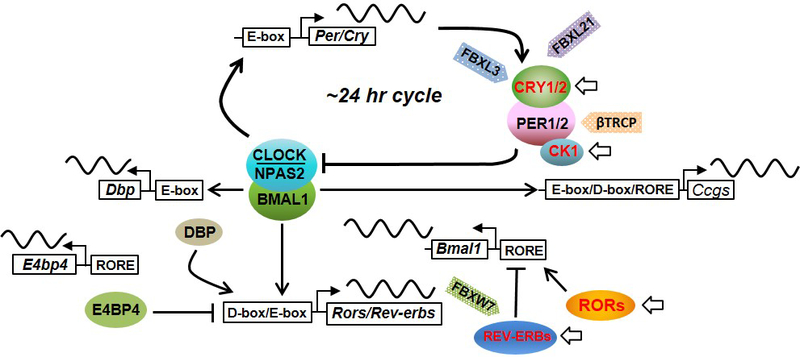Figure 1.

The circadian oscillator and representative drug candidates. The cell-autonomous core oscillator consists of interlocked feedback loops. In core and secondary loops, positive and negative factors form transcription-translation negative feedback. Several other feedback loops (e.g., DBP loop) have been shown to superimpose on this basic framework to fine-tune circadian oscillation. The circadian clock, including both systemic control originated from the SCN and local oscillators, drives downstream gene expression, either directly via circadian response elements including E-box, RORE, and D-box, recognized by CLOCK/BMAL1, REV-ERBs and RORs, and DBP respectively, or indirectly by clock-controlled transcription factors, epigenetic regulators and post-transcriptional and post-translational machineries. A number of small molecules have been identified or developed to target core clock components or proximal regulatory factors (highlighted in red with arrows). Adapted from [5] permission of Frontiers in Neurology via the Creative Commons CC-BY license.
